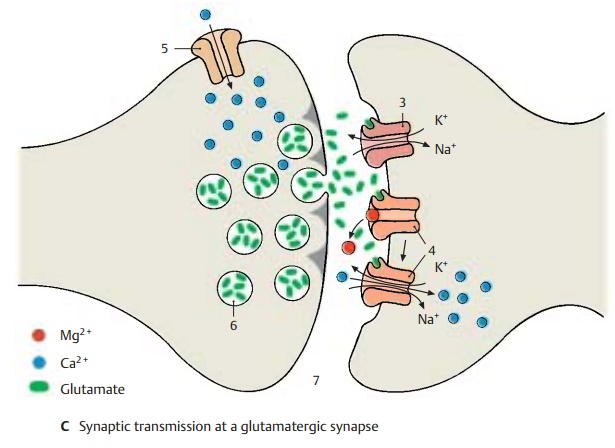Chapter: Human Nervous System and Sensory Organs : Basic Elements of the Nervous System
Synaptic Transmission - The Synapse

Synaptic Transmission
The synaptic transmission is essentially characterized by three processes:
1 Conversion of the action potential arriv-ing at the axon terminal into a chemical signal. Depolarization results in the opening of calcium channels (C5) and in the influx of calcium, which, mediated by certain proteins, causes fusion of synaptic vesicles (C6) with the presynaptic mem-brane and release of the transmitter into the cleft (C7).
2 The released transmitter binds to specificreceptors.
3 In the case of ligand-gated ion channels, this results in their opening for certain ions. In the case of glutamatergic recep-tors, the influx of Na+ or Ca2 + causes depolarization of the postsynaptic mem-brane (excitatory postsynaptic potential, EPSP). In the case of GABA and glycine re-ceptors, the influx of Cl– causes hyper-polarization of the postsynaptic mem-brane (inhibitory postsynaptic potential, IPSP). The activation of G protein-coupled receptors results in a long-lasting re-sponse that may finally lead to a changein gene expression in the postsynapticneuron.

Related Topics